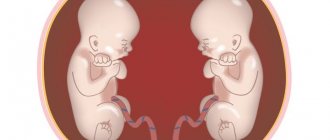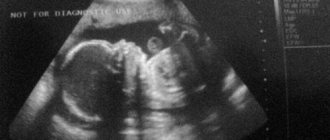From birth to four weeks, the baby is considered a newborn. During this time, the child will have to recover from childbirth, adapt to the new world and start the work of all body systems. And, despite the fact that nature took care of the baby in advance, endowing it with enormous capabilities, mothers need to know how the newborn develops week by week in order not to miss possible deviations and to properly organize care.
First week
Although your baby seems like the most beautiful creature in the world, his appearance may be slightly different from your expectations. Getting used to the air environment, the newborn’s skin acquires a red color, which will change to pale pink by the end of the week. On the fifth day, peeling sometimes begins. It will also pass soon, you just need to lubricate the skin with baby oil.
Beneficial microorganisms settle in the sterile intestines of the baby. Within a few days, meconium, the original feces, will be replaced by regular yellow stool.
Similar material:
- Child development from birth to one year by month
- Is it possible for a newborn to sleep on his stomach?
During the first 7 days of life, babies lose weight; according to the development calendar, this figure should not exceed 10%. A baby’s weight loss occurs due to initial disruptions in lactation and significant energy expenditure by the body. To quickly establish breastfeeding, the mother needs to breastfeed more often.
If you notice jaundiced skin color, tell your health visitor about it. Don't be alarmed; it usually goes away after seven days without special treatment.
The baby sleeps most of the time. During rare periods of wakefulness, he is constrained in his movements and assumes the position to which he was accustomed in intrauterine life.
At first, newborns may experience slight strabismus due to weakness of the muscles that move the eyeball. But this phenomenon also corresponds to the norms according to the infant development calendar.
The baby's thermoregulation is in its infancy. When dressing your child, remember that overheating can be no less dangerous than freezing.
What a one-week-old baby can do
A newborn can distinguish smells very well. After 5 days of life, the baby will turn his head to a cotton swab soaked in breast milk.
Indicators of height and weight of a newborn up to one year
A child's height and weight change almost daily, so doctors measure these indicators every month. After this, we can conclude whether the baby’s rate of physical development is normal or whether there is cause for concern.
However, all standards can be considered approximate, and small deviations in one direction or another are allowed. There are many factors that influence the rate of growth and weight gain that must be taken into account. Only taking these factors into account can conclusions be drawn and appropriate calculations made.
How are standards calculated?
Parents constantly worry and worry about their child, and this is normal. In order not to wait for the next trip to the clinic to be weighed and measure growth, they are trying to find other ways to find out whether their child is developing normally.
All standards of physical indicators are calculated experimentally. These may differ from the data available in the WHO tables, so these differences should not be taken too seriously.
REFERENCE! The genetic factor is important. So, with tall and large parents, the child will grow and gain weight faster than with a miniature mother and a thin, short father.
According to generally accepted standards, height and weight indicators are calculated as follows:
- a newborn baby should weigh from 2.4 kg to 4.3 kg, with the lower limit corresponding to the minimum weight of a girl, and the upper limit to the maximum weight of a boy;
- during the first 7 days after birth, the baby can lose up to 7% of total body weight;
- during the first six months of life, the baby should gain about 650-800 g every month;
- from the 6th to the 12th month of life, weight gain decreases: monthly weight gain is 350-600 g.
To calculate the normal body weight of a child during the first 6 months of life, the formula m = M + 800 * N is used, where M is the body weight at the time of birth, N is the number of months of life.
After the child is six months old, the formula becomes different and looks like m = M + 800 * 6 + 400 (N-6), where M is the baby’s weight at birth, 800 * 6 is the weight that the child should have acquired during the first six months of life, N is the number of months after six months.
IMPORTANT! Weight indicators, as well as height indicators separately, cannot become a reason to judge the normal or pathological rate of physical development of the baby. In order to draw any conclusions, you need to look at the ratio of these two indicators.
Without talking about the individual characteristics of the baby, the optimal height and weight of the child at birth are as follows:
- weight of the newborn - from 2.5 to 3.9 kg;
- The minimum height of a girl is 45.6 cm, the maximum height of a boy is 53.4 cm.
As for height, during birth it is usually 45-54 cm. The most accurate measurements will be taken 2-3 days after birth, during which the degree of deformation of the skull bones and swelling of the soft tissues of the head decreases.
The baby then grows about 3 cm every month during the first three months of life. Then the growth rate gradually decreases: in the period from the 3rd to the 6th month of life, the child grows by 2.5 cm per month, from the 6th to the 9th - by 1.5-2 cm, from the 9th to 12 -th - by 1 cm.
The total increase in height is 25 cm in the first year of life.
Second week
The two-week-old baby has made significant progress towards adaptation. From days 8 to 14, many not only regain lost weight, but also gain up to 150 grams. The baby's belly button heals, which allows mothers to lay it on their tummy for a short time.
But with the digestive system everything is not so good. According to the developmental calendar, the time for intestinal colic comes. Only 20% of newborns suffer from unpleasant sensations associated with increased gas production. The fact that the child’s whims and crying are associated precisely with colic can be understood by his legs bending towards his stomach. This difficult test for the whole family will last for three months. And a lot of folk methods and pharmaceutical mixtures will help to “brighten up” time and make life a little easier.
The baby still sleeps a lot (15–18 hours). After a good feeding, you may notice a cute, fleeting smile on his face.
What can a two week old baby do?
Children in the second week of life are able to briefly fix their gaze on stationary objects. At a distance of 20 cm, a newborn can even see his mother’s face.
Third week
From days 14 to 21 according to the developmental calendar, the child gains another 200 grams, which makes parents especially happy. The baby's motor activity increases, and the muscles become stronger; some babies can raise their head for a short time.
By this age, you have most likely already found a way to calm a crying baby: some rock, others swaddle, or give the breast straight away.
Regurgitation may also be added to colic. If their volume is no more than one tablespoon, there is no reason to worry, just try to hold your baby upright for some time after each meal.
Sometimes crusts appear on his head. Most often this is a reaction to foods eaten by the mother or is associated with the activity of the sebaceous glands. The crusts go away quickly if you soften them and comb them out with a soft brush.
What can a three-week-old baby do:
- looks at objects at a distance of 0.5 m;
- shows activity in response to familiar voices;
- becomes quiet at the sight of something new;
- grabs parents' fingers and hair.
What determines the rate of weight gain and growth?
The individuality of height and weight indicators is explained by the influence of several factors:
- heredity;
- method of feeding the baby (breast or artificial);
- volume of food received;
- the presence of congenital anomalies (heart defects, diseases of the digestive system);
- poor absorption of some nutrients due to innate characteristics (you need to select healthy baby food);
- baby's activity level;
- floor.
In this regard, doctors recommend not to worry if the child grows and gains weight a little slower or faster than usual, if there are no other complaints or reasons for concern.
Fourth week
By the fourth week of life, the baby changes noticeably: postpartum edema goes away, facial features appear, and the gaze becomes more focused.
The baby’s head is still not completely rounded; you can see “live” fontanelles on it, which at first frighten many parents. During childbirth, they helped the baby to be born, and now it is better to cover these vulnerable spots of the baby’s head with a thin cap, even in the absence of drafts.
Stronger muscles allow the child to hold his head longer and longer while lying on his stomach.
In the first month, muscle hypertonicity in children is not considered a deviation, since the maturing brain of a newborn is not able to regulate the functioning of the muscular system.
During this difficult period, the child noticeably gained weight - from 600 to 1000 grams and grew by 4 cm. These are average norms according to the development calendar, many children are more than ahead of them.
But a special achievement is the manifestation of the “revival complex.” Now he recognizes his own faces and smiles meaningfully back.
What can a 1 month old baby do:
- actively move your legs and arms;
- express emotions with a joyful or dissatisfied cry;
- recognize mother by smell and voice;
- When lying down, raise your head.
Table of weight and height of an infant by month (up to 1 year)
To be able to judge whether a child is developing at a normal speed or not, pediatricians have special tables that they refer to during examination. They are different for boys and girls, because the speed of development of babies of different sexes is different.
After the doctor examines and takes the necessary measurements, he can give useful recommendations to parents.
For boys
Boys are usually slightly larger than girls, although they may be slightly behind in development.
For girls
Intellectual, mental and emotional development in girls occurs faster; they even begin to walk earlier than boys. However, the height and weight of female babies is slightly less than that of newborn boys.
How much should a newborn eat?
It is very difficult to determine the volume of milk consumed by a breastfed baby. For other children, the norm can be calculated: multiply the number of days of life by 10, or check our table.
From the 10th day until the end of the first month, children consume on average 100 ml of milk or formula. After 4 weeks, the volume of food will increase to 120 ml.
Main stages of development
After birth and up to one year for a child, this is an important period during which it is important to monitor its development.
Every attentive, caring and conscientious parent should show as much attention as possible to their child at this time so that his physical and emotional state is normal.
The stages of child development are divided into weeks and months. At the same time, in each period, pediatricians highlight the main features that help make a general assessment of the child’s condition.
But still, all children are different, each development is individual, for this reason there may be some differences from established norms.
The normal development of a newborn is assessed in accordance with the following indicators:
- Child's height.
- Baby's body weight.
- Proportional indicators of the development of the child’s body are the circumference of the head and chest.
- Statistical functions of the child - movement.
- Teething.
Newborn reflexes
When a child is born, he has some innate reflexes. With age, some fade away, while others appear or become more complex. The absence of basic reflexes, as well as their early extinction, indicates the presence of pathology.
Protective
Lying on its stomach, the baby instinctively turns its head, which manifests itself from the first minutes of life.
Sucking
If you put a pacifier or finger in the baby's mouth, he will begin to actively suck on the yoke. Many mothers can observe this reflex even on the last ultrasound of the baby during pregnancy.
Prehensile
If you press lightly with your finger on the palm of the crumb, it will grab. Sometimes the baby's strength is so great that it is possible to lift him from a lying position.
Supporting
When in contact with a hard surface, the baby's legs rise and rest on the feet. If you tilt the baby's body slightly forward, it will funny imitate walking. Both reflexes will disappear after 1.5 months.
Crawling reflex
If you support the feet of a baby lying on his stomach with his hand, he will push off. It is also called the Bauer reflex.
Plantar
If you press on the ball of a baby's foot, his toes will reflexively bend.
The assessment of reflexes is carried out by a neuropathologist. During diagnosis, the baby must be fed and calm, otherwise the severity of reflexes may differ.
The norms of their appearance and extinction can be found in the table:
No matter how fast your baby develops, try to be less nervous and worry, because your attitude is quickly transferred to the little person. And let there be more holiday dates in your development calendar!










